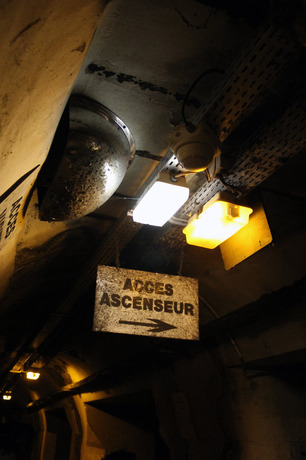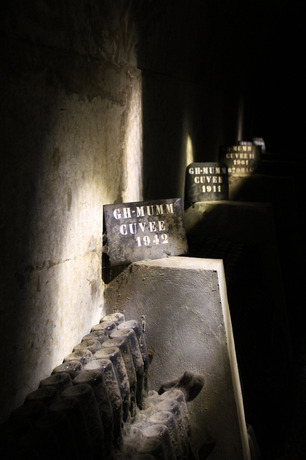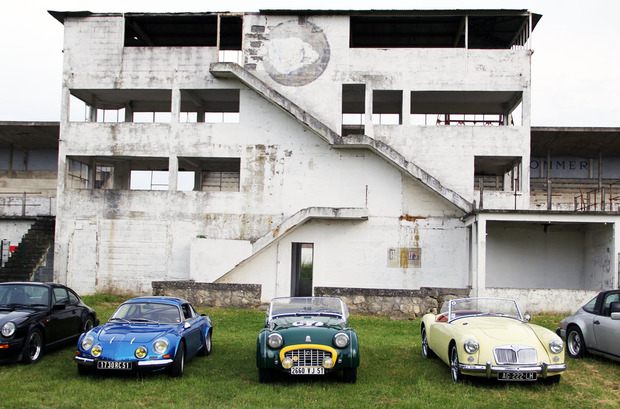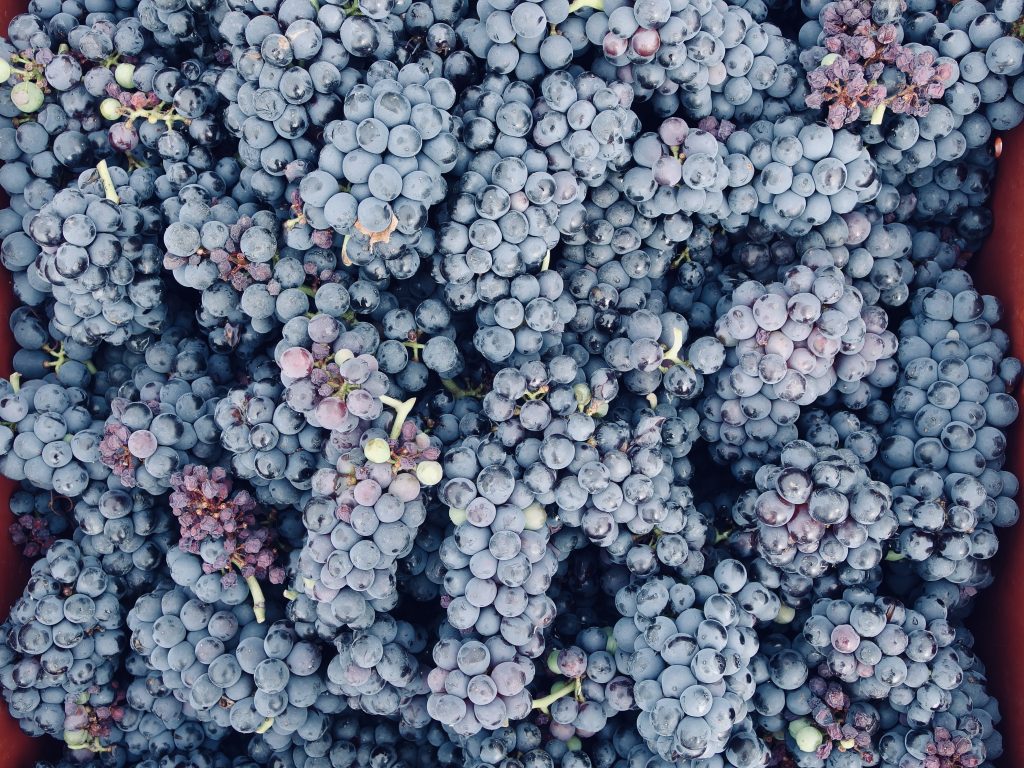GH Mumm Champagne: A Legacy of Victory
A look at Formula One’s podium bubbly, from France’s first Grand Prix track to the vineyard


Just 80 miles from the tourist hordes of Paris lies the quaint yet unassumingly productive city of Reims. In the heart of the Champagne region, the city serves as the unofficial capital of the surrounding vineyards and the revered beverages they produce. Below the city lies a maze of caves (some dating back to the Gallo-Roman period) where millions of bottles are carefully attended by skilled craftspeople to ensure proper aging.
Among the maisons that call Reims home is GH Mumm, a champagne synonymous in France with adventure, victory and pushing the limits. Jean-Baptiste popped a bottle of the brand’s Cordon Rouge atop a glacier in 1904 to toast the success of France’s first Antarctic exhibition. Now, the red-ribboned bottles grace the podium of each Formula One race for the ultimate celebration. However the story of GH Mumm extends far beyond the bottle—with a legacy of pursuit, precision and perseverance surrounding the brand.

From the moment the three German Mumm brothers began procuring vineyards in the region in 1840, the same guiding principal has kept the brand on track: only the best. The village of Verzenay (famous for its windmill that was used as a lookout in World War I and II) is home to the first and indeed the bulk of the maison’s 218 hectares of vineyards. Over half of Mumm’s vineyards are classified as Grands Crus, which indicates a higher level of production capability (but doesn’t necessary reflect the quality of the grape). As a result, Mumm is able to excel in the almighty challenge of making champagne—flawless repetition.

At the time of the house’s beginning, its founders had already formed its signature style and essence. The first vineyards purchased by the Mumm brothers produced pinot noir and the varietal has had a lasting impact on the style of the house—with the brand’s hallmark composed of a majority of the temperamental grape as opposed to the more common majority chardonnay variety. “It’s this balance of freshness and intensity we strive for, that is the mark of the house—and it largely comes from the pinot noir,” says Cellar Master, Didier Mariotti. Indeed the brand’s Cordon Rouge is of a different breed than its peers, with a attention-grabbing boldness not found in your average bottle.


Every aspect of production for each of the eight million bottles produced each year is undertaken with great care—from the soil to the label. Taking into account the importance of process, Mumm is dedicated to pressing grapes as close to their point of origin as possible. Since the early days, each terrior has housed its own press with each designed to best accommodate the volume and varietal. In the 25 kilometers of caves below Reims dedicated to housing Mumm’s bottles—where the temperature stays the same year round—many of the bottles are still rotated by hand (known as riddling) to ensure equal and adequate fermentation. Though tradition plays a key role, the brand is not afraid to implement innovative techniques to enhance quality. The latest of which includes a GPS planting program aimed at improving yields while protecting the terrior.

Just a short drive through the vineyards of Champagne lies a part of Mumm’s history that is more recent, but nevertheless integral to its identity. Where the vineyards turn to wheat fields lies France’s first Grand Prix track, the Circuit de Reims-Gueux. In 1950 it was here that the tradition of popping a bottle of bubbly on the podium began—within view of the vineyards themselves. As anyone who’s left a bottle of champagne in the sun knowns, heat and pressure don’t mix well—and winner Jo Siffert found this out on the podium in 1966, showering himself and his fellow racers in what would become a tradition on podiums not just in the racing world but across all sporting celebrations.


Now they might drive faster, but there are no gentleman drivers on the track today.
Though the track is no longer used for racing and the original grandstand and pit lane are falling into disrepair, it’s a major part of the region’s history and identity. A dedicated group of locals intent on caring for the circuit, Les Amis du Circuit de Gueux, are a testament to the passion the champagne region holds for racing. Some were present for the track’s first race while others know it only as a relic. “This track saw some of the great gentleman drivers,” says Jean Berger, who worked at the circuit first as a boy sweeping the lanes and would go on to a successful career officiating races. “Now they might drive faster, but there are no gentleman drivers on the track today.”
Standing on the finish line—with the vineyards on one side and the growl of a vintage Renault Alpine on the other—it’s clear clear why racers are keen to crack open a bottle. After all, winemaking and driving a race car at life-and-death speeds—while seemingly polar opposites—aren’t all that different. They both require keen attention to detail and a balance of calculated decision-making with an impassioned ability to follow instinct.
GH Mumm is available worldwide with increased availability hitting the US market throughout 2014. Keep an eye out for the hand-labeled Cordon Rouge on each Formula One podium.
Photos by Hans Aschim












